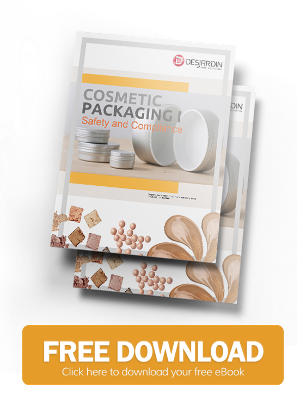The cosmetics industry uses a variety of materials in its packaging, including plastics and metals, with glass being among the oldest packaging materials. The following information provides details on material used for cosmetic packaging.
The industrial revolution expanded the use of plastics and metals for making cosmetic containers such as cans and tubes.
Glass Containers
Sand known as silica is the main ingredient of glass, mixed with metal oxides, sodium carbonate and other trace elements. Jars made of glass are popular for packaging emulsions, since they provide ease for removal of the product with the fingers. A key benefit of glass is that it has a decorative and clean look. The three main types of glass are borosilicate, treated soda-lime and regular soda-lime. Each one has unique chemical properties.
Borosilicate glass is more chemically inert than soda-lime glass, as it contains boron and/or aluminum and zinc. This glass contains sodium hydroxide, which along with other ingredients, trace particles can mix into distilled water within the glass container after a year of storage. Treated soda-lime is useful for long periods or storage while regular soda-lime is more chemical resistant, which is appropriate for general purpose packaging.
Small thick wall glass jars are used for eye shadow, lip gloss and cream products. Larger glass jars are used for foundations, makeup removers, creams and powders. Amber glass jars are designed for bath and body products that don't have clear colors. When sodium ions are reduced, glass becomes a more chemical resistant form of cosmetic packaging.
Plastic Containers
 A wide variety of cosmetic packaging is made from plastic, due to its convenience and hygienic qualities. Unfortunately, plastic tends to contribute to a large amount of waste and once it is opened, products usually must be consumed immediately. One of the main reasons plastic is such a popular material is due to its low cost. It's also lightweight, flexible, unbreakable and durable. On top of that, it's odorless and has a pleasant appearance.
A wide variety of cosmetic packaging is made from plastic, due to its convenience and hygienic qualities. Unfortunately, plastic tends to contribute to a large amount of waste and once it is opened, products usually must be consumed immediately. One of the main reasons plastic is such a popular material is due to its low cost. It's also lightweight, flexible, unbreakable and durable. On top of that, it's odorless and has a pleasant appearance.
The main disadvantage to plastic is its physical stability, making it susceptible to absorption, stress cracking and crazing. Resistance to ink and other chemical substances can limit its use for certain types of packaging.
The most common type of plastic used in cosmetic packaging is PP. Other plastics include PET and acrylic ingredients. Acrylic plastic has the appearance of glass but doesn't break like glass. From an aesthetic perspective, plastics can be made in various colors or tints, depending on the material.
Metal Containers
Cans and tubes are commonly made of metals such as aluminum or tin. Aluminum protects against germs and is one of the most recycled materials on the planet. Most collapsible tubes are made of aluminum, while tin and lead also make up significant percentages in cosmetic packaging.
Metals work as unbreakable packaging for the strongest possible protection of products. They can also protect products by guarding against moisture or high temperature. For companies trying to convey an environmentally-friendly image, metals are highly recyclable. Another key advantage is that metals can be made in a variety of shapes and sizes to avoid waste. Overall, metals are a cost efficient, durable and sustainable solution. In combination with plastics for example, metal cosmetic containers offer marketers exclusive design options to target the upper price segment.
Choice of Material
Structural and material decisions determine the most appropriate packaging. The volume of the product affects size and weight, which affects shipping, storage and cost. Products that oxidize quickly need air-tight containers. Material selection is based on the following important factors:
- type of substance within the container
- considerations for decoration, color, capacity
- lifespan of the product
- size and weight of the product
- ability to resist heat
- physical, chemical and biological aspects of the product
- type of closure (screw on, crimp on, press on, roll on, friction)
Conclusion
Packaging embodies the brand's identity and memorability. Often, the package is already considered part of the product by the consumer. Consider the purposes, advantages and disadvantages of certain materials. Take into account material performance, such as durability and sustainability, and how it relates to retail conditions. Cosmetic products need both attractive and practical packaging to be successful
Disclaimer: The postings in this blog section do not necessarily represent Desjardin's positions, strategies or opinions.
References and Further Reading
- More posts on Cosmetic Packaging, by Alex Cosper and Dawn M. Turner
- Is It a Cosmetic, a Drug, or Both? (2016), by the U.S. Food and Drug Administration
- Regulation (EC) No ´1223/2009 on Cosmetic Products (2009), The European Parliament the the European Council
- ISO 22715:2006: Cosmetics -- Packaging and labelling (2006), International Organization for Standardization






